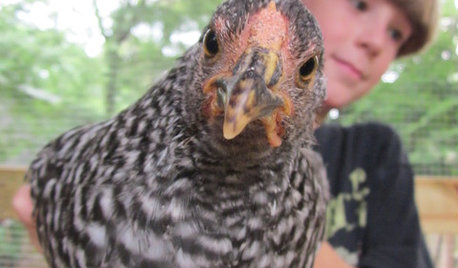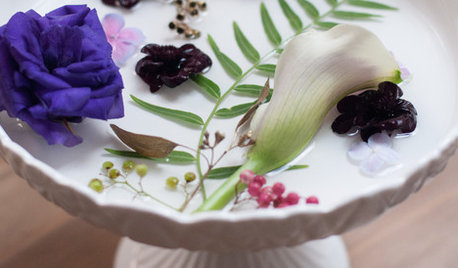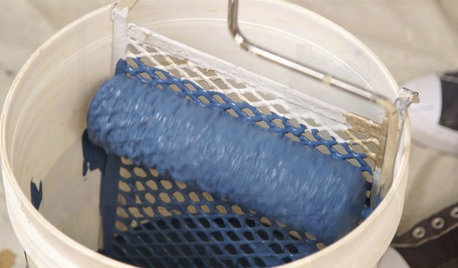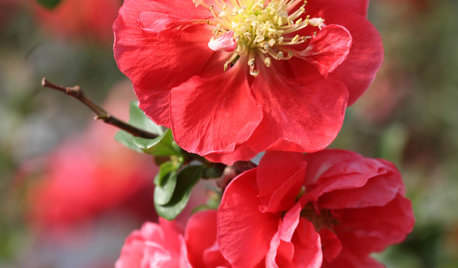Hello, my name is Peter and I've been on the sidelines of this forum for several months gathering a great deal useful information regarding figs and their care. Other than the occasional cat spat I've enjoyed it very much.
My interest in figs spiked this past fall as I began considering additional offerings that my business partner and I might add to our market garden here in northern Mississippi. We currently grow all the traditional southern summer vegetables with an emphasis on salad greens. I've planted many peach, plum, apple, pear and cherry trees which have grown beautifully in our rich soil but I have yet to harvest a descent piece of fruit secondary to the tremendous insect pressure here. I don't have the time or interest in spraying poisons all over the place so I guess these trees will essentially become ornamental if a new idea I have for protecting them doesn't work out this spring. I have had good luck with muscadines and am experimenting with persimmons and paw paws. Anyway, back to figs.
My first fig trees came somewhat on a whim several years ago from a monthly flea market held in a nearby town. The offerings there from my understanding are often cast offs from a regional nursery and are sold at a discount. I think I paid 3 or 5 dollars each for gallon pots that were labeled as celest, brown turkey, and texas ever bearing. The little trees were placed somewhat haphazardly around the property and left to fend for themselves with little or no thought to the marketability of their fruit.
The celest lasted 2 years. It had been placed near a very suspicious piece of ground along side a pond where I'd actually managed to kill a weeping willow ( I didn't know that was possible). Before its passing it managed to produce a few wrinkled purple fruits that were a little grainy and basically unremarkable. The tree labeled brown turkey has been killed to the ground each year and has yet ripen a fruit before frost. The Texas ever bearing has been the star so far. While it too has, much to my disappointment, been killed to the ground each year, last season it grew to a multi trunked height of over 12 feet and produced numerous golf ball sized amber skinned fruits with a delicate pink interior. They were very tasty. This has compelled me to consider offering figs as a market product and encouraged me to learn more about different varieties and thus the discovery of this forum.
My first step this winter was to protect the trees I currently have as opposed to leaving them to fend the elements as done historically. The brown turkey was still small enough that I was able to slip one of our concrete wire tomato cages over it and fill it with hay. I've peeked into it several times since and other than a little burn on the very tip top of the tree where the hay settled, the wood looks very good. The Texas being so tall required a bit more work, but it is wrapped in hay, an old carpet and a wind break of thin plywood. Each tree required a bit of pruning prior to bedding them for winter and I saved the cuttings for rooting.
With my enthusiasm peaking I ordered several new varieties of trees. I received my Chicago hardy and Texas BA 1 from edible landscaping very promptly. They were fully dormant and well packaged though the Chicago seemed a little " loose in it's footing ", perhaps from shipping. From Petals From The Past I've received one each of Alma, Celest, Champaign, white Marseilles, LSU purple, and LSU Black. They too arrived promptly and well packaged yet several were not fully dormant. Unfortunately they were shipped during the sharpest cold spell we've had this winter and the leaves were burnt on several. I kept those in my greenhouse and they've recovered nicely and are putting on new growth. All others are resting in my cool dark storm shelter awaiting spring.
I began contemplating the hardiness issue of figs here in zone 7, the lengths I've gone through to protect my trees recently and the lengths I may have to go through in the future. I decided perhaps my best bet would be to find some resilient fig trees in the area and attempt to propagate them. A few weeks ago I grabbed my pruning shears and went off on a fig hunt. There are a lot of old homesteads in this area and I was convinced I could find some true survivors.
My first find was along a rural highway right near a country store we call " the beer joint". Standing somewhat isolated in a pasture stood a tremendous multi trunked mushroom shaped fig tree that is probably 20 or more feet tall. The driveway leading to the Southern Living style house associated with the property was long, winding and gated. I popped into the beer joint and asked if they knew who lived there. They said her name was Dottie, and elderly woman and gave me her phone number. I called her and despite a frigid wind she zipped up to the gate in her golf cart and graciously offered me all the cuttings I wanted. She told me the tree had been planted many many years ago by a distant relative next to a small house that has long since disappeared. She describes the tree as very productive, having sweet purple fruits and stated that the tree was almost unapproachable due to the bees surrounding it this past summer. Strange, but that's what she said. I took numerous cuttings and will call this variety " Dotties beer joint ".
My second stop was in the small town of Mount Pleasant at an antique dealer. I knew he was often evolved in estate sales and was familiar with the surrounding old homesteads. He told me of a fig tree less than a block away that was a descendant of a tree that once stood next to a hotel that existed in the 1800s. The elderly gentleman that transplanted the cutting remembered eating figs from the tree in his childhood. Apparently his grandfather ran the hotel. He saved the cutting prior to the hotel being torn down. This gentleman has passed away but was known by the nick name " Honey Dump ". What a great name for an unknown fig variety and so it is that these cuttings will be called such.
My last stop that day was an old deserted and dilapidated farmstead on the outskirts of Collierville TN. I just had a feeling a fig tree might be found on the property. I pulled into the driveway to find the frame farm house essentially destroyed by vandalism and certainly poised for demolition as the city expands. I wandered into the back yard and behold between the house and an old silo, struggling to reach beyond the grasp of a vicious honey suckle vine was a fig tree. I took numerous cuttings and will call this variety Silo.
I've studied the various techniques for starting cuttings and settled on the sphagnum moss in plastic baggies option. I've been quite successful so far, finding that in my experience green growth from the cuttings appears first followed shortly by roots. I now have probably 30-40 starts enjoying the tropical environment of my greenhouse as we eagerly await spring. Some of these " sticks" even have tiny figs on them which I will obviously pinch off to encourage root growth. I look forward to seeing what these " heirloom unknowns " produce and perhaps sharing some cuttings with those of you that may have some interesting varieties.
















igo4fish
Related Professionals
Middle River Landscape Architects & Landscape Designers · Oatfield Landscape Architects & Landscape Designers · Clermont Landscape Contractors · Medford Landscape Contractors · Bedford Heights Landscape Contractors · Dallas Landscape Contractors · Fair Oaks Landscape Contractors · Milford Landscape Contractors · Pleasant Grove Landscape Contractors · Woodland Landscape Contractors · Carmel Decks, Patios & Outdoor Enclosures · Monroe Decks, Patios & Outdoor Enclosures · Carson Fence Contractors · Oceanside Fence Contractors · Tulsa Fence Contractors